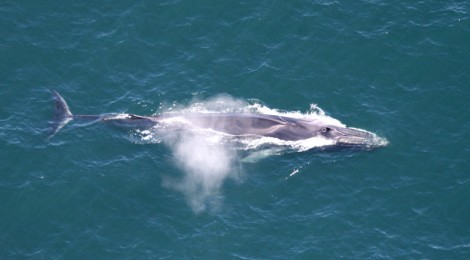
Whales Are Geoengineers According To New Scientific Report
International consortia of experts declare whales are potent ecosystem geoengineers
It’s uplifting to see a newly published paper in which an international who’s who team of biologists have tallied several decades of research on whales from around the world. They report that whales, in fact, have a powerful and positive influence on the function of oceans, global carbon storage, and the health of commercial fisheries.
“The decline in great whale numbers, estimated to be at least 66% and perhaps as high as 90%, has likely altered the structure and function of the oceans,” Joe Roman of the University of Vermont and his colleagues write in the July 3, 2014, online edition of Frontiers in Ecology and the Environment, “ but recovery is possible and in many cases is already underway.”
I’ve been trumpeting this same story for many years as it’s been a clearly obvious conclusion. That conclusion is inevitable when one begins to look upon life forms in the ocean as all having a vital job to perform as opposed to simply having been placed there for the indiscriminate use and abuse by humans.
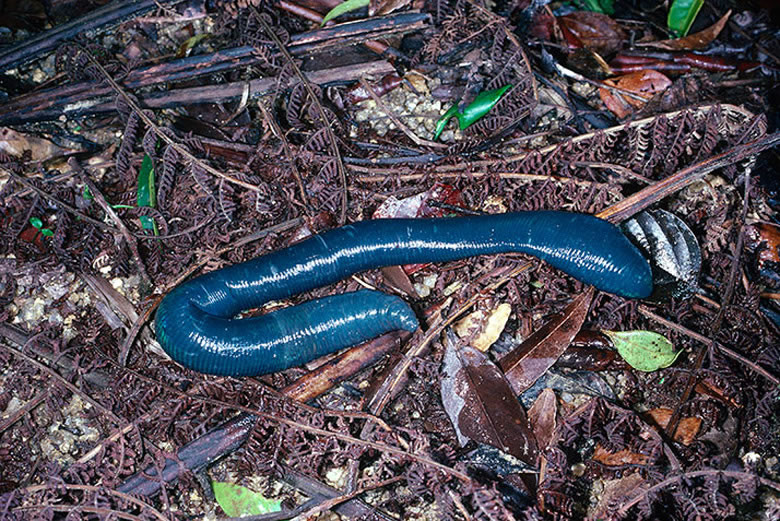
A “giant blue” earthworm and the “giant blue” whale have a lot in common. They both toil in their garden and in doing so help sustain its abundance.
My post Whales Are Worms describes the vital job whales perform maintaining the ocean pastures where they live. It’s great to see this group of pundits come to the same conclusion and publish it again. Thanks for the back up guys.
Partnering With Whales To Restore Ocean Pastures
“The continued recovery of great whales may help to buffer marine ecosystems from destabilizing stresses,” the team of scientists writes. If the whales can recover their role may become especially important as climate change threatens ocean ecosystems with rising temperatures and acidification. “As long-lived species, they enhance the predictability and stability of marine ecosystems,” Roman said.
With specific regard to ocean acidification the only direct means to keep the half a trillion tonnes of already emitted CO2 from inevitably becoming acidic H2CO3 (carbonic acid) as it mixes with ocean waters is to help restore ocean phytoplankton. That plankton will intercept CO2 before it can become acid and convert it via photosynthesis into more ocean plankton — food for whales. Authors of the paper have stated that there is the potential for this biological interception of CO2 to capture and convert more than a billion tonnes of CO2 into revived ocean life every year through restored ocean whale pastures.
Filter feeding baleen that eat plankton and toothed squid and fish eating sperm whales are known collectively as the “great whales.” They the largest animals to have ever lived on Earth dwarfing even the largest prehistoric dinosaurs. With huge food demands — and large populations numbering in the many millions before humans started hunting them — great whales are the ocean’s ecosystem engineers, “geoengineers” in popular parlance. They every day consumed countless tonnes of zooplankton and larger ocean life that shares their ocean pasture.
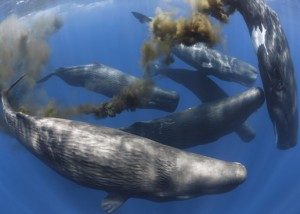
Sperm Whales seen here are “working” together to ‘fertilize’ their ocean pasture. Now we may know why whales are heard to make those strange groaning sounds 🙂
Of course the result of all this eating is that they must poop which indeed they do in prodigious amounts helping to distribute nutrients through the water. Their poop is typically very high in iron which is the most vital and limited mineral micro-nutrient in the ocean. In effect the great whales, even in their greatly reduced numbers today, have always been farmers who sustained their ocean pastures.
According to one of the scientists on the team iron has the remarkable capacity of facilitating the ultra efficient photosynthetic fixation of as much as a million times it’s amount in carbon, especially in the case of whale provided iron. Aside from the whales and others active marine life participants that efficiently recycle iron most of the world’s ocean pastures rely on dust in the wind to bring them the vital iron they need to flourish. Whales acting as providers of recycled iron to ocean pastures may be their most potent ecosystem service.
Here’s a video of whales and the sounds they make 🙂
After a life of a century or more even whale carcasses help the ocean environment, dropping to the seafloor, where they provide food and habitat for many species that only exist on these oasis-like “whale falls”. “Dozens, possibly hundreds, of species depend on these whale falls in the deep sea,” Roman notes.
Commercial whaling dramatically reduced the biomass and abundance of great whales diminishing both the ocean pastures they tended and sea bed contributions of the corpses of these gentle giants. In the Southern Ocean alone it is estimated that more than 2 million whales were slaughtered in the 20th century. Imagine the impact and loss of productivity on modern agriculture if millions of farmers were targeted and eliminated.
“As humpbacks, gray whales, sperm whales and other cetaceans recover from centuries of over-hunting, we are beginning to see that they also play an important role in the ocean,” Roman said. “Among their many ecological roles, whales recycle nutrients and enhance primary productivity in areas where they feed.”
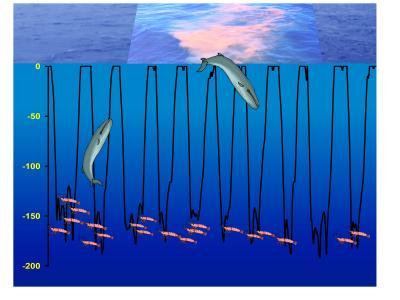
Huge blue whales plunge to 500 feet or deeper and feed on tiny iron rich krill. Then they return to the surface—and poop.
(Image Credit: Frontiers in Ecology and the Environment)
They do this by feeding at depth and releasing fecal plumes near the surface — which supports plankton growth — a remarkable process described as a “whale pump.” Whales also move nutrients thousands of miles from productive feeding areas at high latitudes to calving areas at lower latitudes.
This new paper summarizes a strong body of evidence that indicates whales are active farmers of healthy ocean pastures. Ocean pasture restoration will bring about whale recovery. This will lead to higher and sustainable rates of productivity in locations where whales aggregate to feed and give birth and most importantly do their job of tending to their ocean pasture homes. In turn these revived ocean pastures will support more robust fisheries.
Our Whale Partnership Brings Back The Fish
My work in the NE Pacific confirms in fact some of the speculations made by the boffins in the new paper. During my work to restore and revive our ocean pasture in the summer of 2012 in the NE Pacific we observed and recorded the great whales arriving in fantastic numbers to feed and poop and help revive and sustain the vital pasture. We were more than happy to give a little help to our friends, the gentle giants.
Immediately the salmon benefited as hundreds of millions of baby salmon swimming into the thriving pasture instead of mostly starving were treated to a feast of plenty. We spotted and caught young salmon in our bloom confirming their presence. The rest of the story of the salmon is just now becoming history.
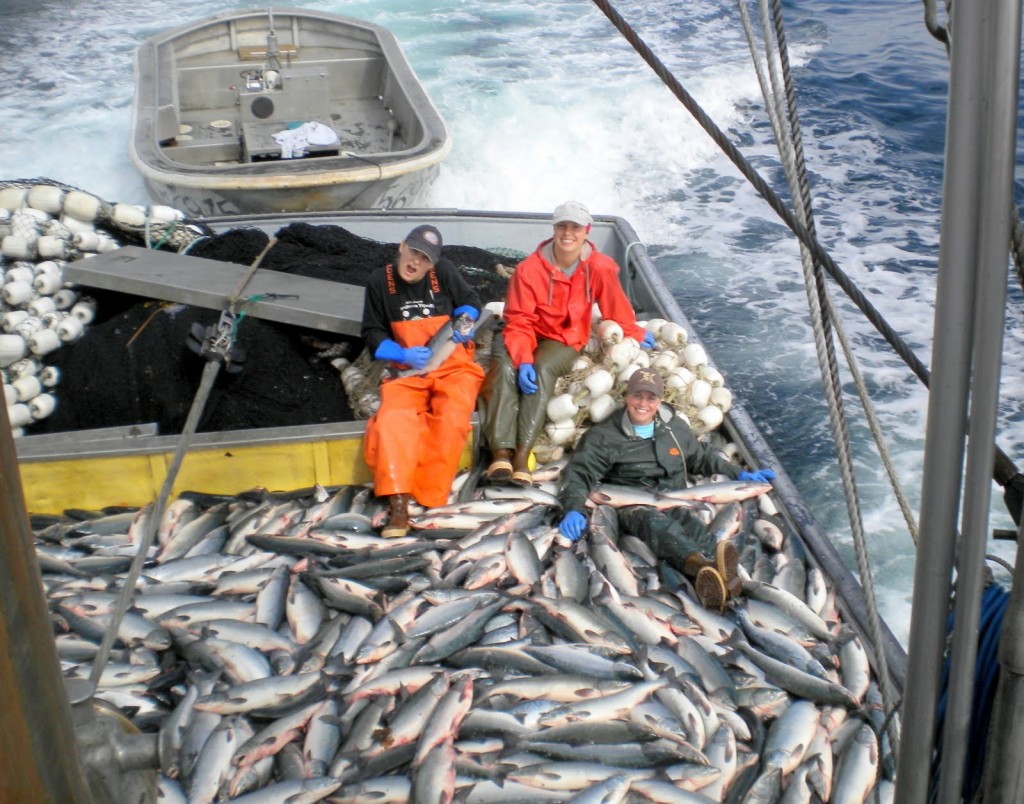
The Fish Came Back From Our Restored Ocean Pasture Producing The Largest Catch Of Salmon In Alaskan History
Those salmon from restored ocean pasture started swimming home last fall and in nearby SE Alaska the largest catch of salmon in all of history was landed. Instead of the 50 million Pink salmon expected 226 million were caught. Read more in my post The Fish Came Back.
Until recently, ocean scientists have failed to invest the time and effort to study and observe directly the functional roles of whales in marine ecosystems. Now with modern technology like radio tagging and other technologies becoming more common the professors can sit back and follow whales on their IPads while they ponder how to understand the roles whales serve in their ocean pastures. “The focus of much marine ecological research has been on smaller organisms, such as algae and planktonic animals. These small organisms are essential to life in the sea, but they are not the whole story,” Roman said.
More observations of whales will help provide a better understanding of population dynamics and “are likely to provide evidence of undervalued whale ecosystem services,” note the ten scientists who co-authored this new paper, “this area of research will improve estimates of the benefits — some of which, no doubt, remain to be discovered — of an ocean repopulated by the great whales.”








